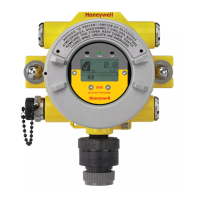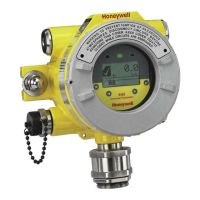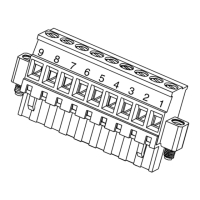XNX Universal Transmitter Quick Start Guide
6
2 Warnings
• High o-scale readings may indicate an explosive concentration of gas.
• Installation must be in accordance with the recognized standards of the
appropriate authority in the country concerned.
• Any work on the interior of the detector must be conducted only by trained
personnel.
• Ensure that local regulations and site procedures are followed when carrying
out any work. Appropriate standards must be followed to maintain the overall
certication of the detector.
• To reduce the risk of ignition of hazardous atmosphere, disconnect the equipment
from the supply circuit before opening the detector enclosure. Conduit runs must
have a seal tting connected within 18 inches (45 cm) of the enclosures. Keep the
assembly tightly closed during operation.
• Never open the XNX enclosure under power unless the area is known to be non
-hazardous.
• The detector must be earthed/grounded for Intrinsic Safety, electrical safety,
and to limit the eects of radio frequency interference. Earth/ground points are
provided inside and outside the unit. EMI note for applications using shielded
cable: Cable shield terminations must be made at the cable glands with suitable
EMI type glands. Avoid terminating cable shields at the Earth ground lug inside
the XNX enclosure. In cases where wiring is in pipe, a shielded cable is not
required. The external terminal is only a supplemental bonding connection where
local authorities permit or require such a connection.
• Take care when handling EC sensor cells as they may contain corrosive solutions.
• Do not tamper with or in any way disassemble the sensor cells.
• Do not expose the transmitter or sensor cells to temperatures outside the
recommended range.
• Do not expose the sensor to organic solvents or ammable liquids.
• At the end of their working lives, sensors must be disposed of in an
environmentally safe manner. Disposal should be according to local waste
management requirements and environmental legislation.
• Alternatively, sensors may be securely packaged, clearly marked for
environmental disposal, and returned to Honeywell Analytics.
• Do NOT incinerate electrochemical cells as they may emit toxic fumes.
• Verify all outputs, including display, after installation, after service events, and
periodically to ensure the safety and integrity of the system.
• Delays resulting from transmission errors between sensor and transmitter extend
response times T90 by more than one-third. The period until fault indication is 10
seconds.
• As some test gases are hazardous, exhaust the ow housing outlet to a safe area.
Do not use the XNX Universal Transmitter in oxygen-enriched atmospheres. (In
oxygen-enriched atmospheres, the electrical safety is not given.)

